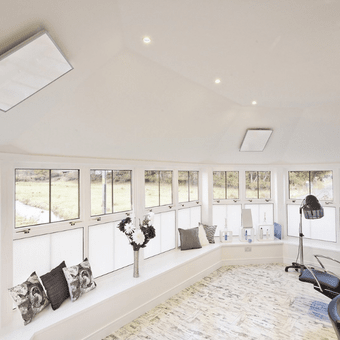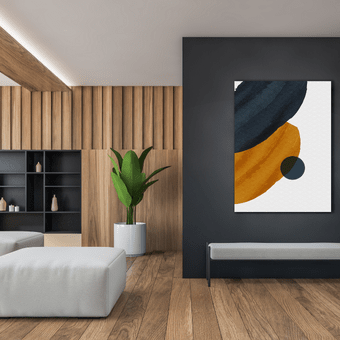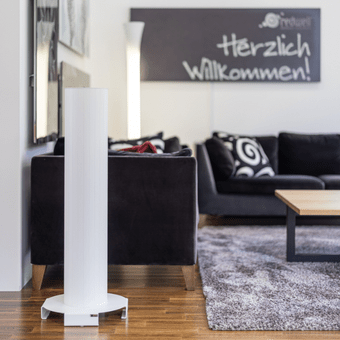


How many watts does my infrared heating need?
The decision has been made and you have decided on infrared heating for your own four walls? Good choice, because infrared heaters provide pleasant and healthy radiant heat. In order for the infrared heating to have the effect you are hoping for, the infrared heating should be equipped with the right wattage. To find an infrared heater with the ideal wattage, there are many factors to consider.
Room size as the basis for the required heat output
The area and volume of the room are decisive for the optimal heating output. There are numerous heating calculators that assist in calculating the heating output and usually use the square metre figure as a basis. For an even more precise calculation, it makes sense to calculate the heating output based on the cubic metres of the room. This way, the room height is also included in the calculation. This is because the room height plays a decisive role when the infrared heating is used as a full heating system.
Furthermore, in addition to these factors, there are a number of other decisive points that must be taken into account when choosing the right infrared heating system. As with conventional heating systems, infrared heating depends on both the local conditions and the individual need for heat.
Which factors are important?
As mentioned, surface area and room volume are the decisive criteria for effective infrared heating - but by no means the only ones. In addition to the surface area and the room volume, other things need to be clarified so that the infrared heating brings the desired effect:
- Area and room volume
- Age of the building
- Insulation of the building
- Condition of the windows
- Number of exterior walls
- Climate on site
An orientation guide
How much heating power is needed for a room or a flat depends not only on the size of the room. The condition of the house also plays a decisive role. It is good to know that infrared heaters heat the room differently than other heaters. They do not heat the air in the room, but the walls and the furniture and objects in the room. Thus, the infrared heating does not only produce warm air, but rather a lasting heat storage in the form of furniture and walls.

Which wattage for which room size?
Although the room size forms the basis for the selection of an infrared heater, this is not the only decisive factor for the wattage. In general, an infrared heater with increasing wattage is recommended as the room size increases. Accordingly, high heat outputs tend to be sufficient in large rooms and lower heat outputs in small rooms.
In addition, the wattage required differs depending on the age of the building. For example, an aging house requires a higher wattage heating system than a well-insulated new building. Plan with a guideline value of 15 watts per cubic metre in a new building and at least 30 watts per cubic metre in a poorly insulated or uninsulated old building.
An often quoted figure for the heating capacity per average living space is 300-900 watts. This estimate also depends on the individual use of the heater. For large rooms, several infrared heaters with low wattage in combination are recommended instead of infrared heaters with high wattage. In this way, consumption is lower because not just one infrared heater alone has to provide all the power. Once you know which output makes sense for your room, you can choose from infrared heaters with different designs. Whether monochrome or with an individual pattern, you are guaranteed to find the right model for you.
















